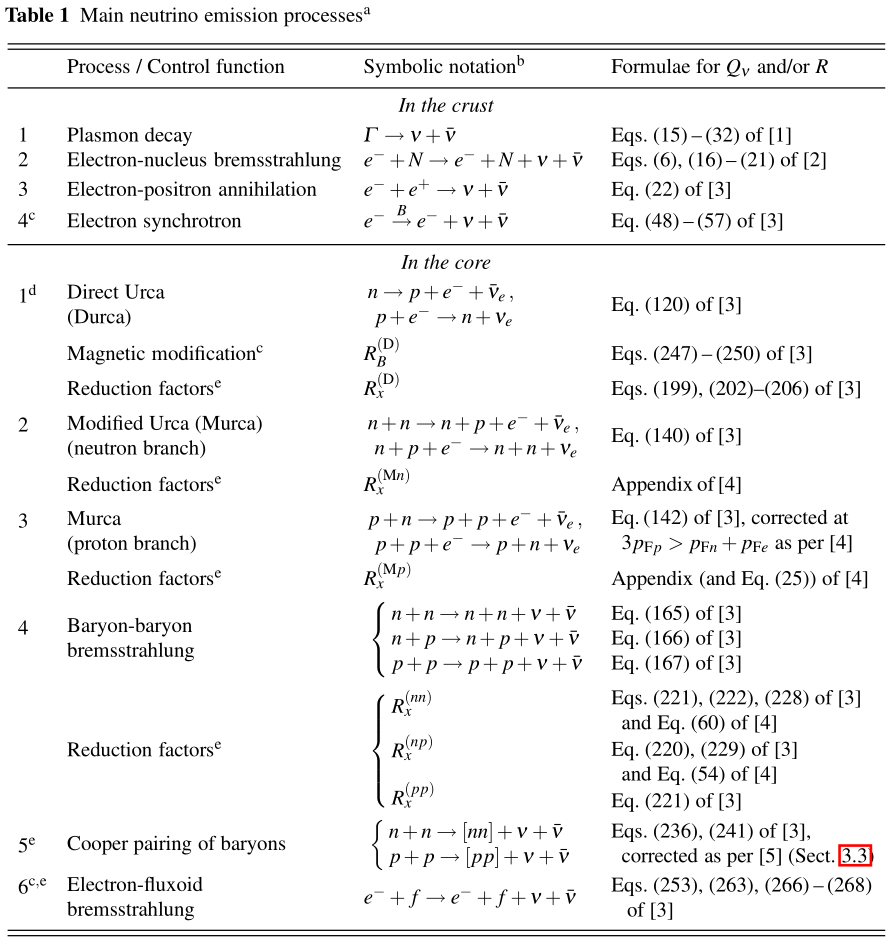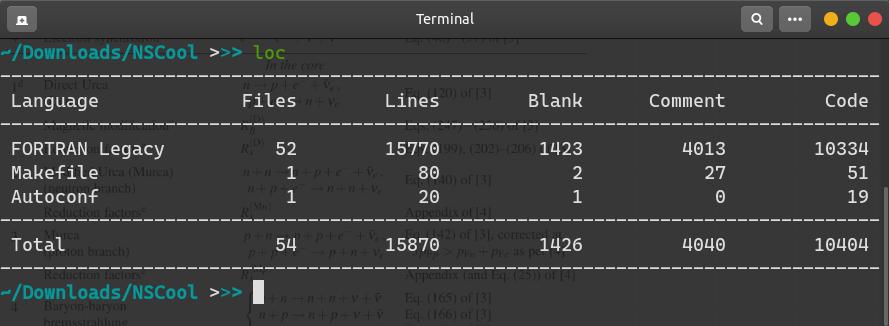Bird's-EYE View of
Neutron Star Cooling
Tae Geun Kim
Yonsei HEP-COSMO
@ 16th Saga-Yonsei Joint Workshop
2019.12.23
Table OF CONTENTS
- Introduce Neutron Star
- Stellar Structure Equation
- Equip with General Relativity
- ERA of Computation
- Mild blueprint
Stellar
structure Equation
stellar structure
What is a star?
- Generate energy itself (Nuclear fusion)
- Bound by self-gravity
- Stable (via Hydrostatic equilibrium)



Stellar structure
How to describe a star?
Stellar structure equation
- Mass Conservation
- Hydrostatic equilibrium
- Energy transport
- Energy generation
+ Equation of State
Stellar structure
Conservation of Mass
Stellar structure
Hydrostatic Equilibrium

If \( \ddot{r} \) = 0
Stellar structure
Total Energy
From 1st law of thermodynamics,
Equation becomes...
Integrate with some tricks
For NS, \(\dot{K},\dot{\Omega},L_{nuc}=0\)
Equip with
general relativity
setup geometry
For static, non-rotating and spherical symmetric star, we can write metric as follows
Consider perfect fluid matter.
From energy-momentum conservation (\(\nabla_\nu T^{\mu\nu} = 0 \)), we can obtain next equation.
From Einstein equation, we can get below relations.
Tolman-oppenheimer-volkoff equation
Combine all equations of previous slides, then we can get next equations.
These equation is called TOV equation. (already appeared in Prof. Tachibana's lecture)
Newtonian VS General Relativity
Newtonian
General Relativity
ERA of computation
overview of computation process for
neutron star cooling
- Set initial condition - \(\rho_c\)
- Choose Equation of State - \(P=P(\rho)\)
- Solve TOV equation - \(m(r),\Phi(r),\rho(r),P(r)\)
- Determine & calculate neutrino & photon emissivity - \(Q_\nu, Q_\gamma\)
- Numerically solve system of differential equations - \(L,T\)
It seems to be easy to implement.
Too many things to do


two candidates
NSCool (D. Page)
dStar (E. F. Brown)
- Pros
- Stand-alone (No external dependencies)
- Have experiences working with Particle Physics (By Koichi Hamaguchi)
-
Cons
-
Too old (Fortran 77)
-
Contains some errors
-
Contains deprecated codes
-
No any documentation
-
- Pros
- Reliable (Built on MESA)
-
Readable & Relatively easy to use
(Modern Fortran) - Opensource (on Github)
- Cons
- Should study MESA first
- Nobody used this code for particle physics related research
My Process
Now, I'm working with NSCool. But hard to customize & still some errors.
\(\Rightarrow \) Porting to effective modern platform with some modification - Rust
- Much side-effects, not pure subroutine

Raw coding

- Not much side-effects, pure subroutine

extern
ffi

mild
blueprint
Brief_plan.py
research = ResearchStatus.get()
while True:
while research != "porting complete":
research.more()
time.sleep(0)
# Is it valid with observation data?
if research.valid_with_data():
research.go_to_next_phase()
break
else:
research = ResearchStatus.error()
continueCurrent status
Describe Neutron star
via TOV
Understand Fermi gas theory
Complete porting of NSCool
Test with observed data
Start particle physics related research
Current status
expectation
- Can understand cooling process of Neutron star.
- Have effective research framework which contains following properties.
- Reduce error between theory & simulation.
- Do not have to suffer with architecture dependencies.
- More safe & more fast.
- Complete documentation.
- Easy to use.
references
- Astrophysics Books
-
Stellar evolution
- Prialnik, D. (2000). An introduction to the theory of stellar structure and evolution. Cambridge: Cambridge University Press.
-
Compact Star
- Glendenning, N. K. (1997). Compact stars: Nuclear physics, particle physics, and general relativity. New York: Springer.
-
Stellar evolution
-
Articles
-
Neutron Star Cooling
-
Potekhin, Alexander Y., José A. Pons, and Dany Page. Neutron Stars—Cooling and Transport. Space Science Reviews 191.1-4 (2015): 239–291. Crossref. Web.
-
-
Neutron Star Cooling